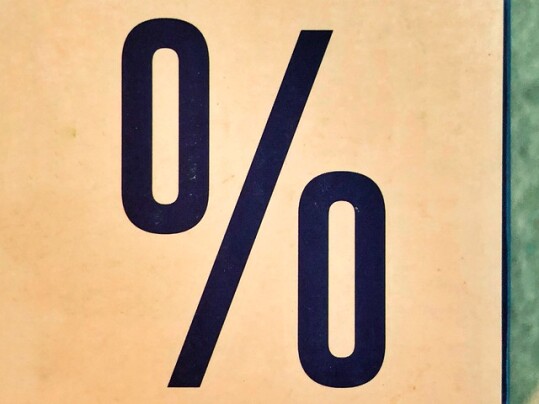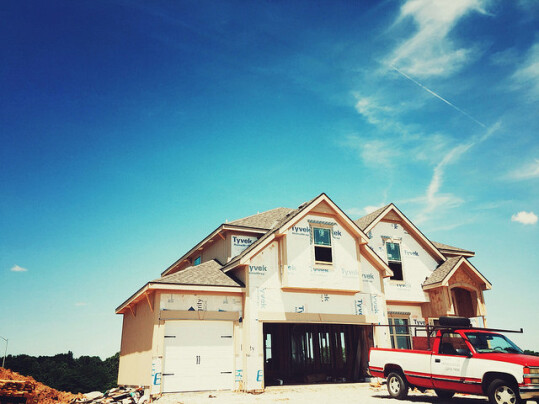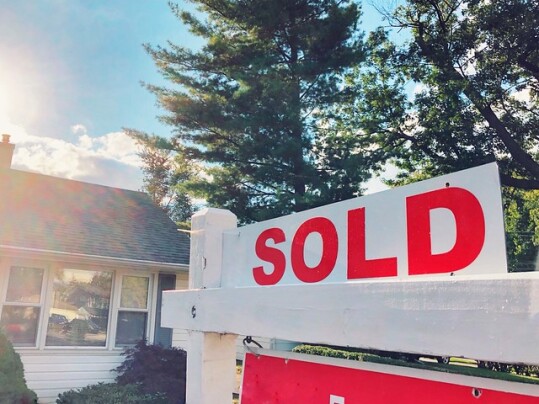According to the Mortgage Bankers Association’s Weekly Applications Survey, average mortgage rates rose again last week. Rates were up across all loan categories, including 30-year fixed-rate loans with both conforming and jumbo balances, loans backed by the Federal Housing Administration, and 15-year fixed-rate loans. But despite rising rates, purchase activity increased 8 percent from the week before. Joel Kan, MBA’s associate vice president of economic and industry forecasting, says the average loan size set another record, indicating that most of the activity is on the higher end of the market. “The average loan size for a purchase application set a record at $418,500,” Kan said. “The continued rise in purchase loan application sizes is driven by high home-price appreciation and the lack of housing inventory on the market – especially for entry-level homes.” The MBA’s weekly survey has been conducted since 1990 and covers 75 percent of all retail residential mortgage applications. (source)
Archive for January 2022
Buyer Demand Rises Despite Higher Rates
Construction Costs Dampen Builder Confidence
Home builders are a great gauge of housing market health. When they’re optimistic, chances are the economy is doing well and more new homes are being built. And when more new homes are being built, that helps balance supply and demand and keeps prices from rising too quickly. The National Association of Home Builders’ monthly Housing Market Index measures builder confidence and scores the results on a scale where any number above 50 indicates more builders view conditions as good than poor. In January, the index moved down a point to 83. The decline was the first in months but keeps the index relatively unchanged from where it was last spring. Chuck Fowke, NAHB’s chairman, says the drop is due to rising construction costs, which has made it harder for builders to keep up with buyer demand. “Higher material costs and lack of availability are adding weeks to typical single-family construction times,” Fowke said. “NAHB analysis indicates aggregate cost of residential construction materials has increased almost 19 percent since December 2021.” Despite those challenges, the index remains at a high level, with the gauge measuring current sales conditions holding steady at 90. (source)
Are Homes Still Selling Above List Price?
In a competitive market, it isn’t uncommon for a home to attract multiple buyers. When this happens, buyers have to make their offer more attractive to the home’s seller in order to have it chosen over other buyers’ offers. Typically, that means more money. This is the primary reason for recent home-price increases. For the past few years, there haven’t been enough homes for sale to satisfy buyer demand, which has caused more competition, bidding wars, and a higher percentage of homes selling above their list price. But, like any market, the housing market has its ups-and-downs. So what should winter buyers expect when out looking at homes? Well, according to one recent analysis of December home sales, there’s still a large percentage of homes selling above list price – though it’s fallen from its summer peak. The numbers show 43 percent of homes sold above list price during the final month of 2021. That’s down 14 percent from its peak last June, but 9 percent higher than one year earlier. That means, winter buyers will likely find the market less competitive than it was last summer, but still competitive enough that they should prepare for the possibility that they’ll have to outbid other buyers. (source)
Inventory Is Key To Housing Health In 2022
Home prices are always a hot topic among prospective home buyers. The reasons for this are obvious. After all, the price of homes in the neighborhoods you’re targeting will, in large part, determine whether or not you can afford to buy one. So what might happen to prices, and the overall market, in the year ahead? Well, a lot depends on how many homes are available for sale. The main factor pushing home prices higher these days is a lack of inventory. Naturally, if inventory improves – either because more homeowners list their homes for sale or more new homes are built – it will help balance the market and keep prices from spiking. With a healthier supply of homes, home sales will rise and there’ll be less competition between buyers. That’s the best case scenario for the 2022 market. On the other hand, if inventory doesn’t improve and prices continue to climb higher, affordability conditions may begin to suppress buyer demand – which would also bring more balance to the market, albeit in a less positive way. (source)
Mortgage Credit More Available In December
The standards used to determine whether or not a borrower is approved for a mortgage aren’t fixed. There are times when they tighten and times when they loosen. Because of this, the Mortgage Bankers Association tracks credit availability each month in order to measure how easy or difficult it is for borrowers to get a mortgage. Any increase in their index indicates that credit has become more available, while a decline means standards have tightened. In December, the overall index rose 0.8 percent, pushing it to its highest level since May 2021. Joel Kan, MBA’s associate vice president of economic and industry forecasting, said standards have loosened due to current market challenges. “December’s growth was driven by more ARM and lower credit score loan programs, which was likely due to a combination of the rising rate environment and affordability challenges,” Kan said. “Lenders expanded offerings to qualified borrowers who were the most impacted by these market conditions.” Despite the improvement, credit availability is still 30 percent lower than its pre-pandemic level. (source)
Purchase Activity Increases Despite Rising Rates
According to the Mortgage Bankers Association’s Weekly Applications Survey, average mortgage rates rose last week across all loan categories, including 30-year fixed-rate loans with both conforming and jumbo balances, loans backed by the Federal Housing Administration, and 15-year fixed-rate loans. The increases, while significant, weren’t enough to slow buyer demand, however. In fact, demand for purchase loan applications increased 2 percent from one week earlier. Joel Kan, MBA’s associate vice president of economic and industry forecasting, says the year has started off strong. “The housing market started 2022 on a strong note. Both conventional and government purchase applications showed increases, with FHA purchase applications increasing almost 9 percent, and VA applications increasing more than 5 percent,” Kan said. “MBA expects solid growth in purchase activity this year, as demographic drivers and the strong economy support housing demand.” The MBA’s weekly survey has been conducted since 1990 and covers 75 percent of all retail residential mortgage applications. (source)
Climate A Factor When Considering A Move
There a lot of things to consider when thinking about making a move. How close you’ll be to family and friends, affordability, and the local job market are all important factors that play a role when choosing where we’d like to live. But, according to one recent survey, climate is also a factor for homeowners and renters considering a move. In fact, among renters it was the most important factor, ranking higher than both the job market and home prices. Homeowners, on the other hand, ranked it second behind proximity to family and friends. Interestingly, there were also differences when broken down by generation, with Gen-Z homeowners ranking it first, while millennial and Gen-X respondents put it behind both home prices and closeness to family and friends. Ultimately, though, there wasn’t a whole lot of separation between the various priorities offered to survey participants – which is an indication that, in a perfect world, we’d all choose to live somewhere with nice weather, good jobs, and affordable homes close to family, friends, and nature. (source)







